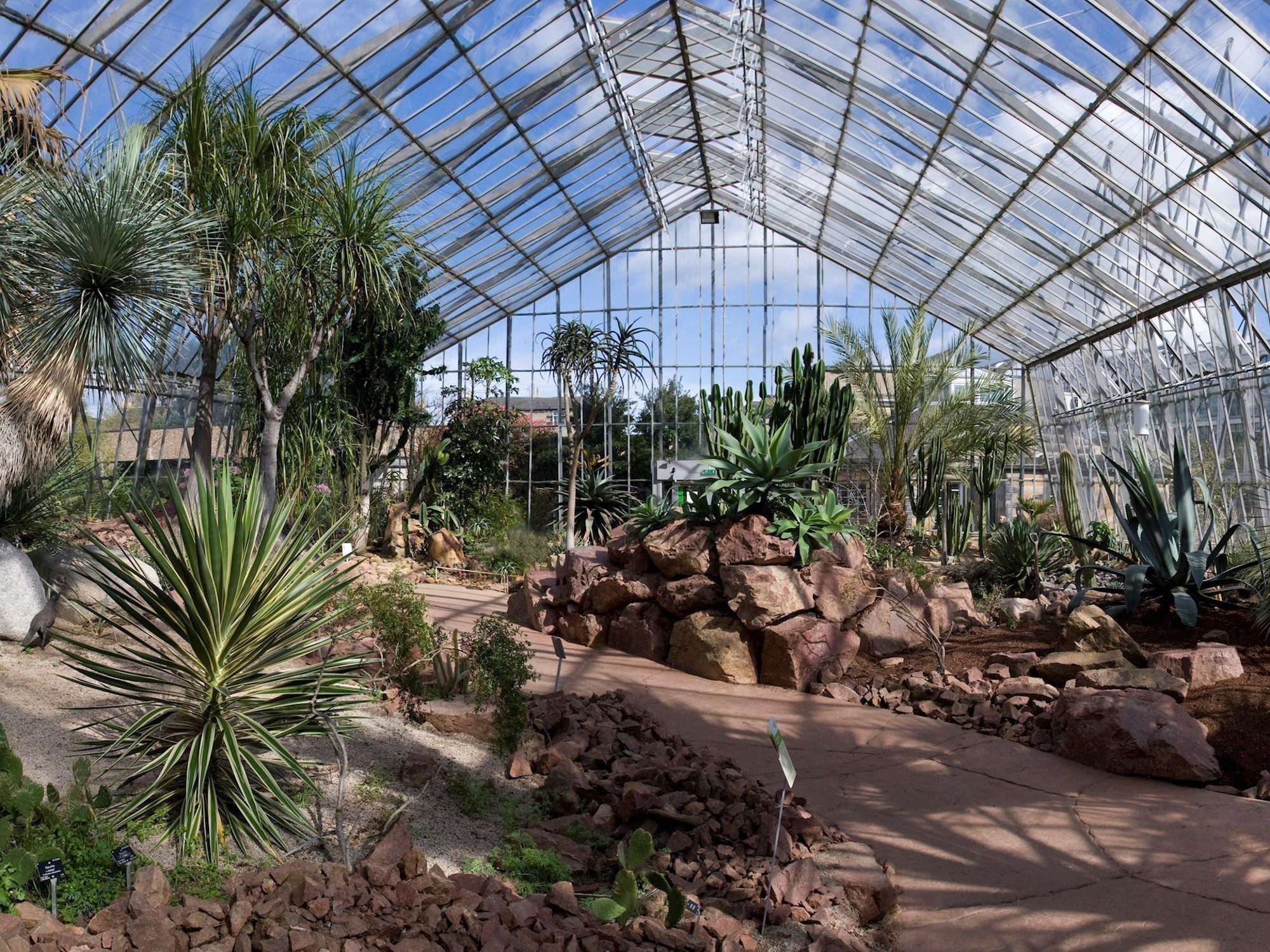
Exploring the Glasshouses
Temperate Palm House
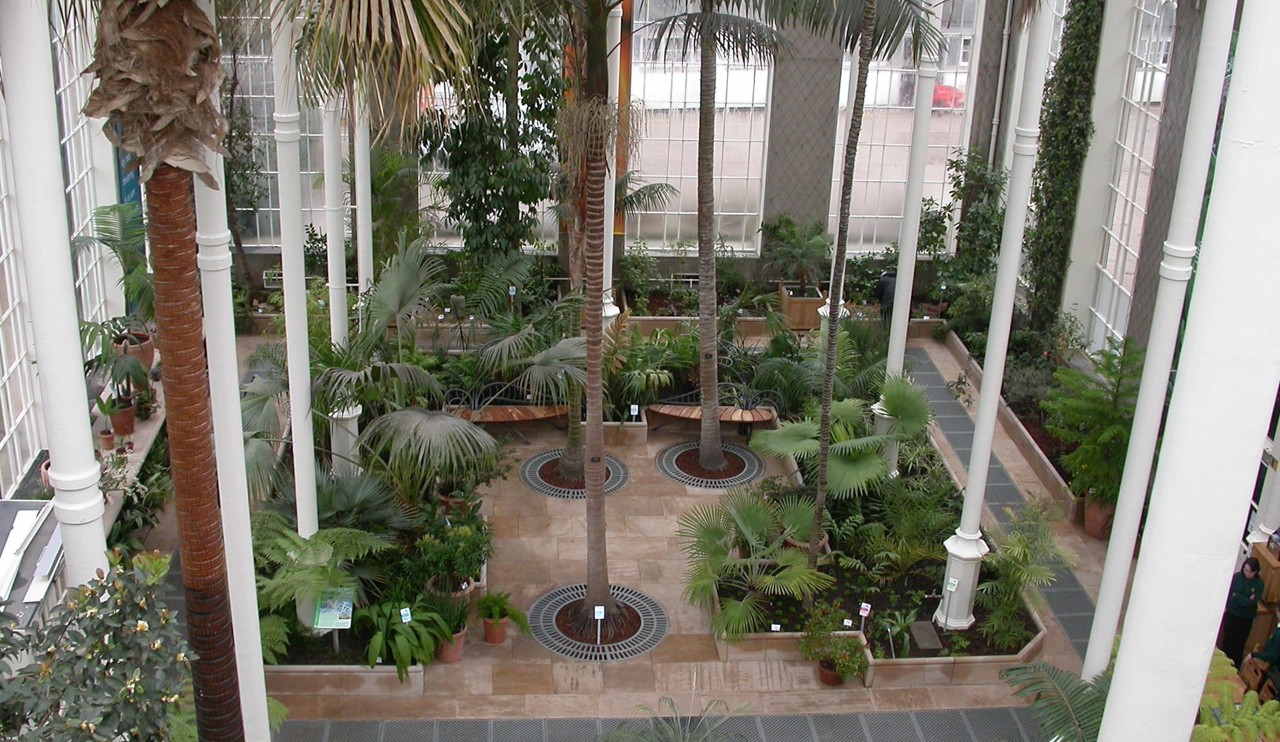
Filled with Ferns & Palms to complement the Victorian idea for the display, although ours are planted rather than maintained in pots as they did from 1713 to 1890. The light levels in this house are far lower than those in other glasshouses due to the wide stone pillars. Since the temperature never falls below 10°C, many frost-tender species thrive here.
Palms are arguably the most useful group of plants on our planet. They provide a vast range of economic products from foods such as dates and coconuts to oils used in cosmetics and cooking.
Tropical Palm House
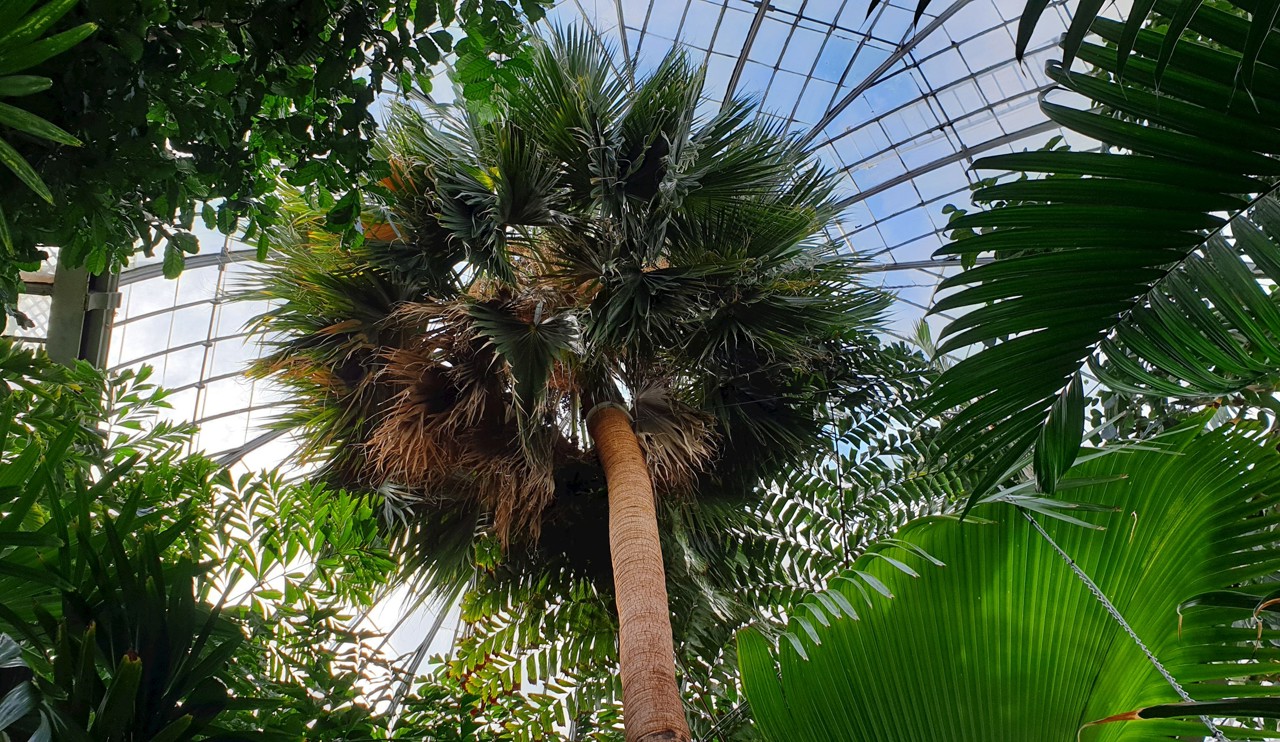
The Tropical Palm House is not only the oldest glasshouse in Edinburgh dating from 1834, but also boasts the Garden's oldest palm at its centre. The Sabal bermudana was moved from the previous Leith Walk site in 1822 and spent the first 70 years at the Inverleith site in an ever increasing pot. It was finally planted into its current position around 1892. Look out for other palms like the multi-stemmed Caryota and the climbing Rattan, not to mention our giant bamboo whose growth can go from ground to roof in 4 to 5 weeks!
Plants and People House
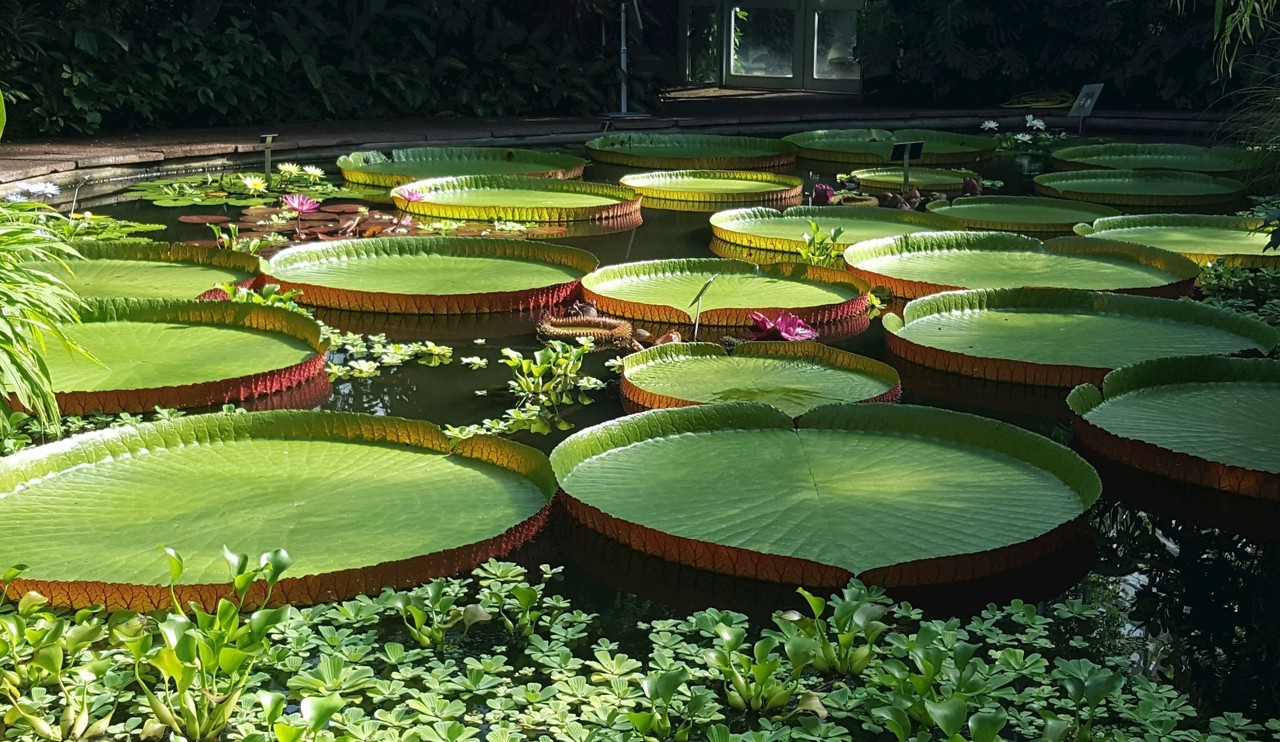
Here luxuriant tropical rainforest vegetation and economical plants - including bananas, rice, sugar and cocoa - surround the central pond. In the summer the pond is dominated by the huge floating leaves of the giant water lily (Victoria species), which thrives in the high humidity and hot conditions of this house. Although giant water lily plants is a perennial in the wild, they cannot be sustained all year round so far north due to the low winter light levels. Instead, fresh seed is sown each year in January to produce new plants.
Orchids and Cycads House
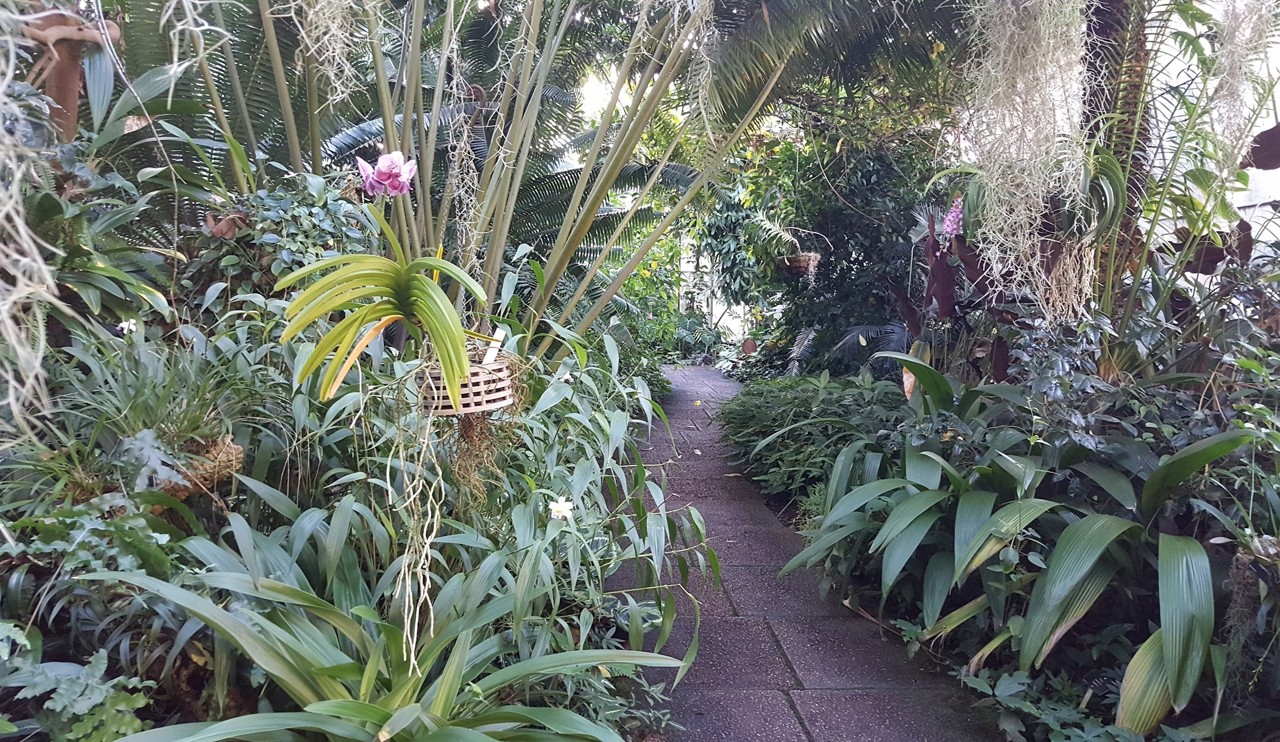
A smaller individual example of the 1967’s Front Range, this glasshouse was opened the following year and dominated by cycads. They have tough palm-like leaves, and both the male and female plants bear spectacular cones. Cycads are very slow growing, surviving for up to 2,000 years, although unfortunately in their native habitats many are threatened with extinction. Some of the cycads in this house are already over 200 years old. A wide range of orchids flourishes in the moderate humidity and warmth of this house. Some, known as terrestrial orchids, are rooted in the ground, but many others grow epiphytically - on the surfaces of other plants.
Ferns and Fossils House
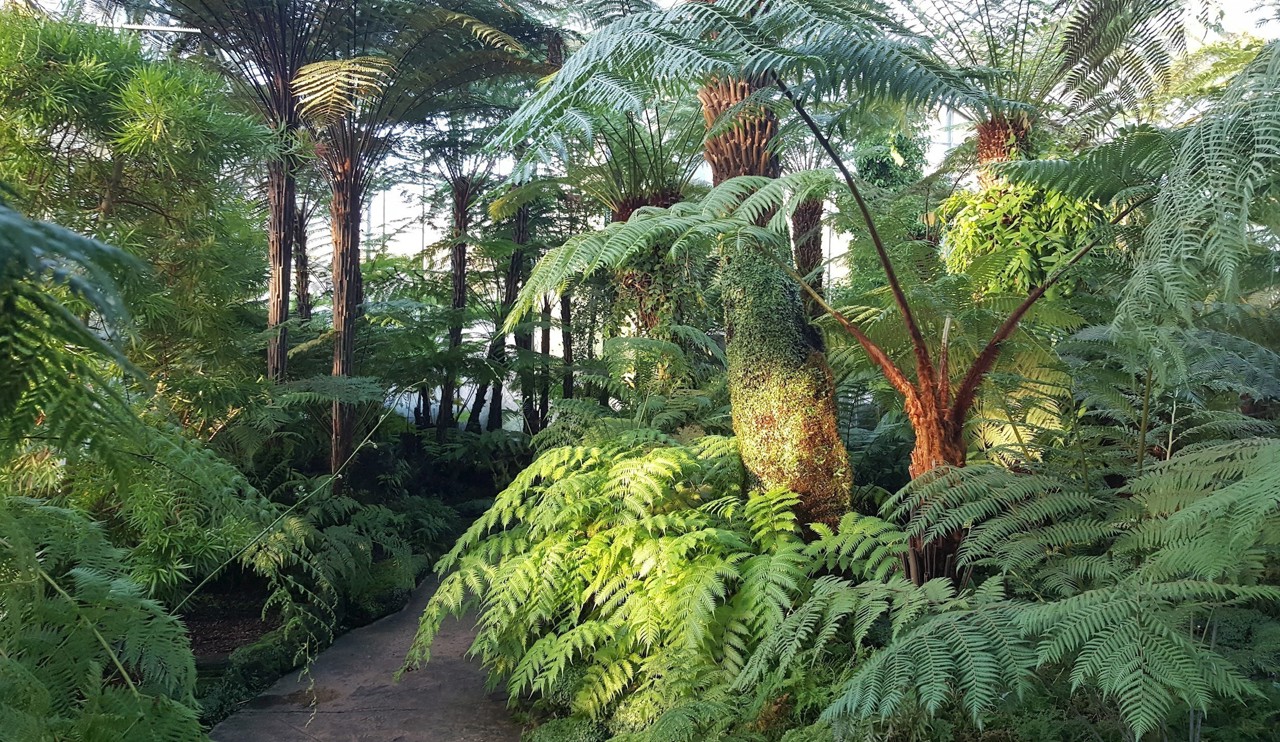
The grove of tree ferns around the cascading stream in the centre of the house echoes the montane cloud forests of temperate Australasia. These tall-growing species, which can reach up to 20 metres, provide shelter for other delicate species and under-storey ferns that demand protection from high light levels. You will also find a giant horsetail (Equisetum myriochaetum) here - it's as invasive as the garden weed and is contained within a concrete planter.
Look out for a replica of Westlothiana lizzae (created by Mo Farquharson), a 25cm long lizard-like reptile that lived in the swamps in central Scotland some 338 million years ago and also Acmopyle pancheri, endemic to New Caledonia, and now under threat as populations become fragmented by mining activities and fire.
Rainforest Riches House
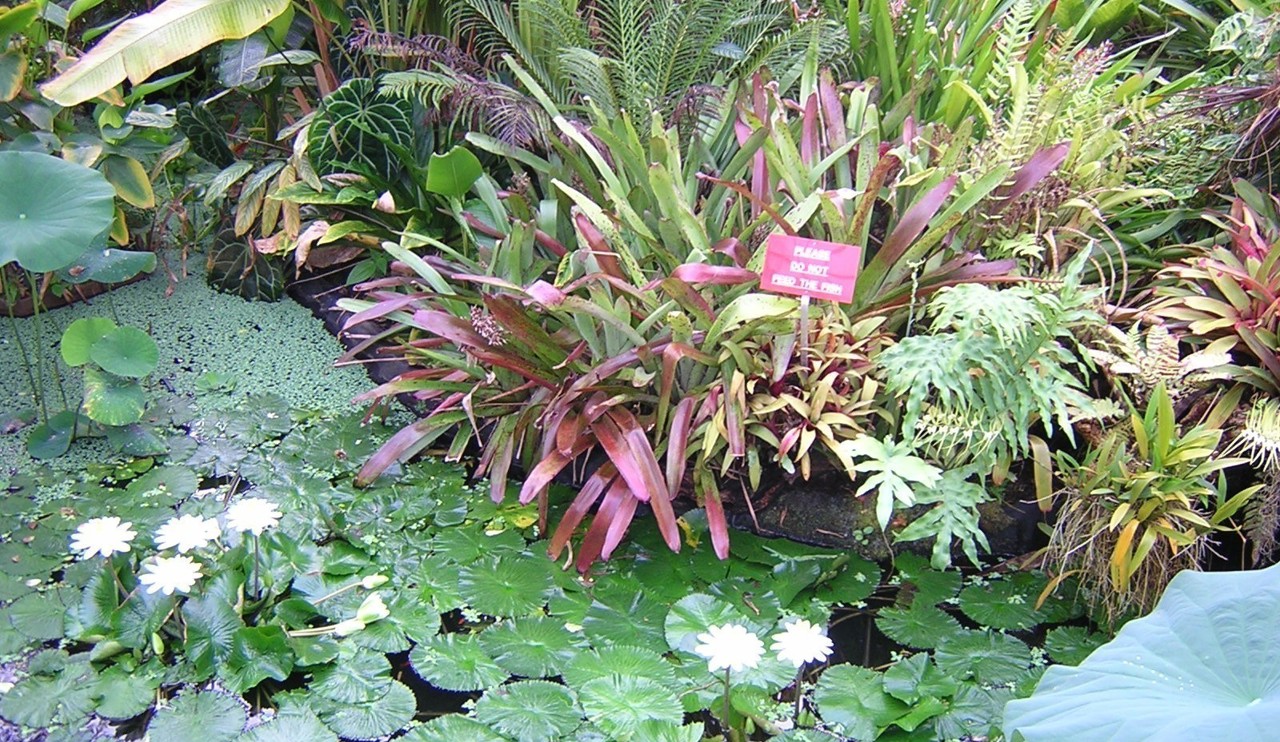
Experience the hot and humid atmosphere of the South American rainforest. A range of exotic climbers, many of which have extraordinary flowers, festoons the walls and railings that overlook the pool brimming with carp. Featuring prominently are the bromeliads - a large family of over 2,000 species, of which the most familiar is the fragrant pineapple (Ananas comosus). Known as 'urn plants', their leaves spiral around a central hollow in a nest shape, storing water for the plants and creating a reservoir for other life forms, such as the tree frog. In late winter the bright red pompom flowers of the Calliandra haematocephala provide a splash of colour.
Temperate Lands House
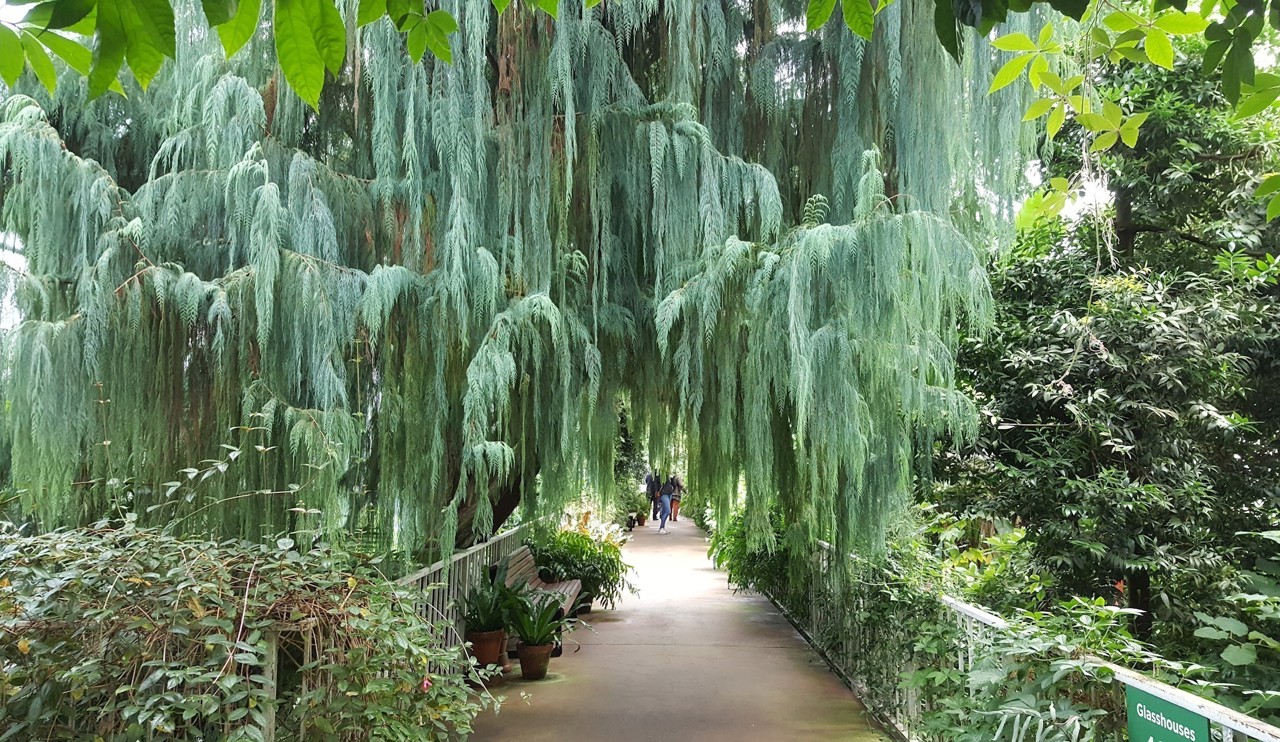
The great expanse of this house is a direct result of the external supports designed into the Front Range by the architects for the Department of the Environment in 1967; the design maximises the light available to the plants and provides a pillar-free internal area which is landscaped to create an atmosphere of exotic habitats. The bridge that stretches end to end gives wonderful views down onto the lower level. The house features plants from warm, moist evergreen forests, such as the Japanese blue oak (Quercus glauca) and the kauri (Agathis australis). Beneath these are many shade-loving plants such as begonias, hedychiums and ferns, which thrive in the dappled shade.
Arid Lands House
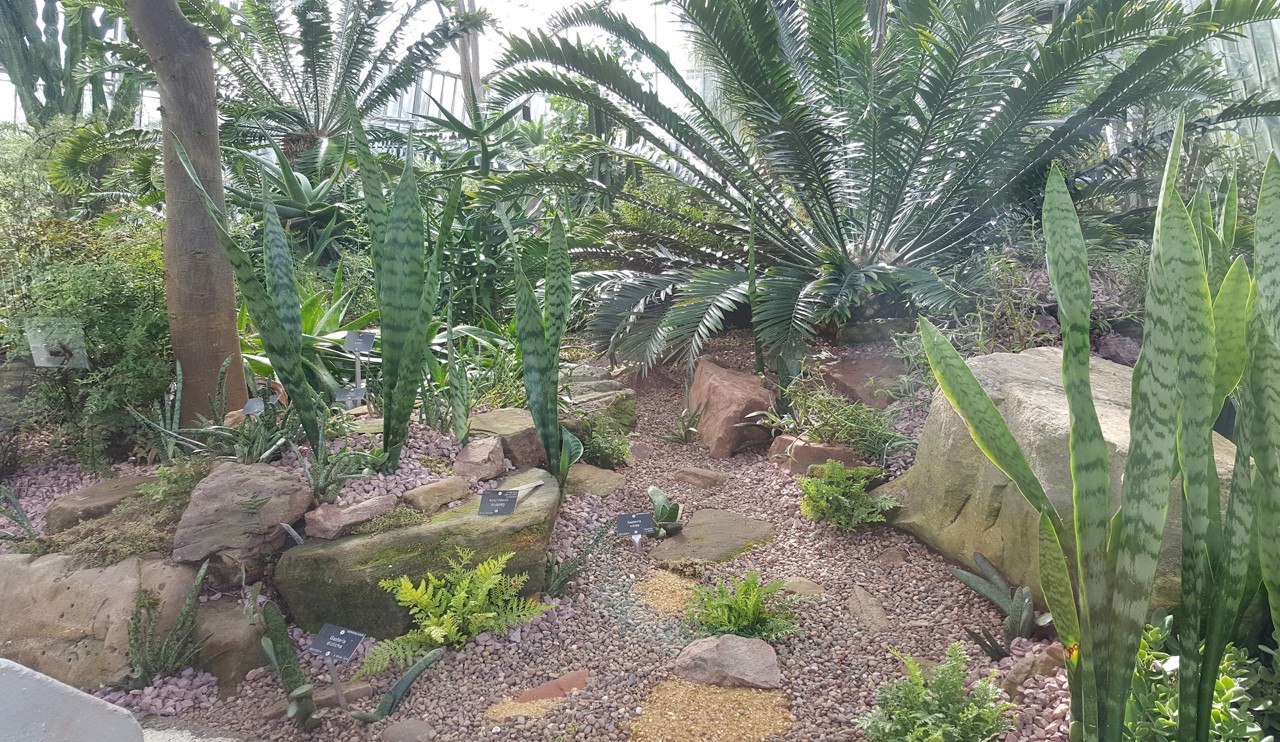
The clear, dry air of the Arid Lands House transports you to desert regions of the world, from the Americas to Africa and Arabia. The displays in the house explore the complex ecosystems of desert life; the plants are xerophytes, which have adapted in various ways to show extraordinary tolerance of dry conditions. Some, such as Agave and Aloe, have fleshy leaves in which water is stored, while Cacti have leaves that are nothing more than spines, while others like the ferns shrivel up like a nest of dry leaves. In summer, the sandstone in the house absorbs the heat in the day and releases it at night when these areas can drop to freezing temperatures. The plants benefit from this heat, as well as from the shade that helps with water conservation.
Montane Tropics House
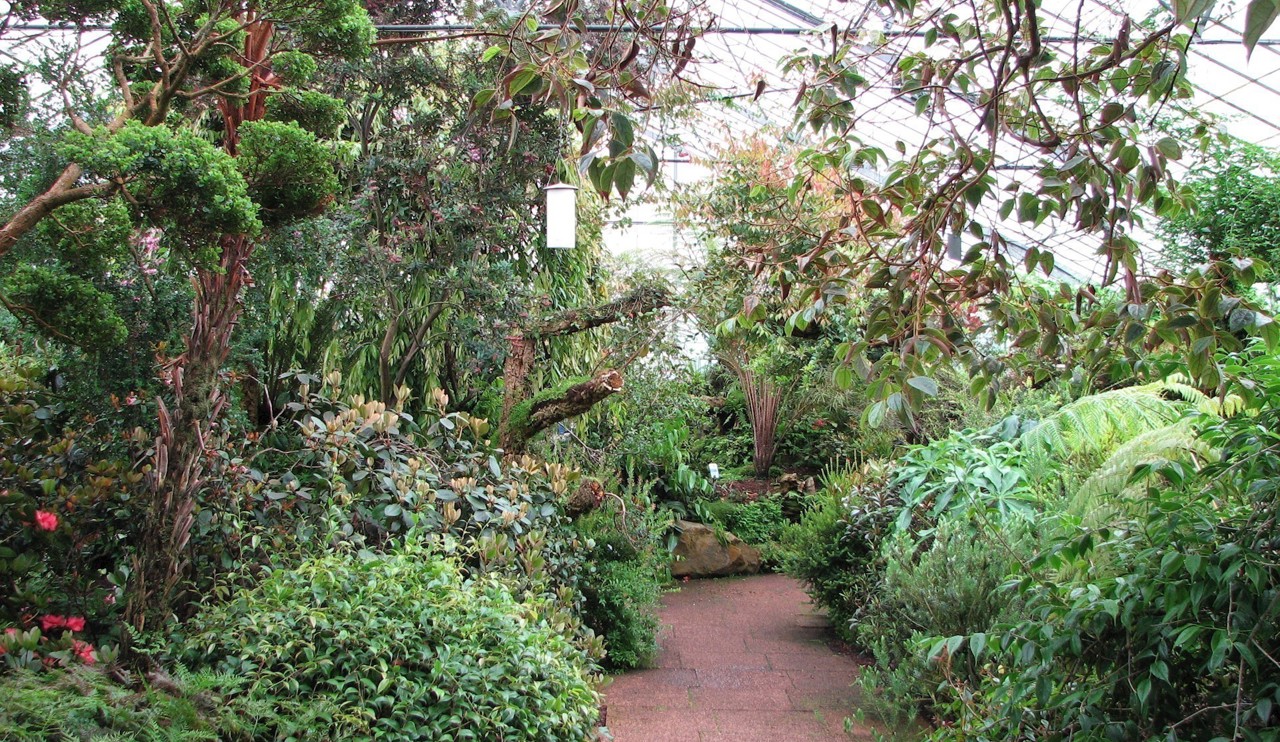
North of the Front Range is the first of the two clear-span glasshouses that opened in 1978 and are landscaped to reflect the scientific collection of SE Asia. Here the higher altitude plants thrive in a cool moist & bright atmosphere.
The first represents the mountainous region of Borneo to Indonesia, which is home to the world's richest diversity and largest collection of Vireya rhododendrons. These beautiful plants can be found growing from sea level to over 4,000m in the wild yet are not frost hardy and need to be grown under glass. A case of carnivorous plants is another popular attraction in this house. Look out for the cobra lily (Darlingtonia californica) and the Venus flytrap (Dionaea muscipula).
Lowland Tropics House
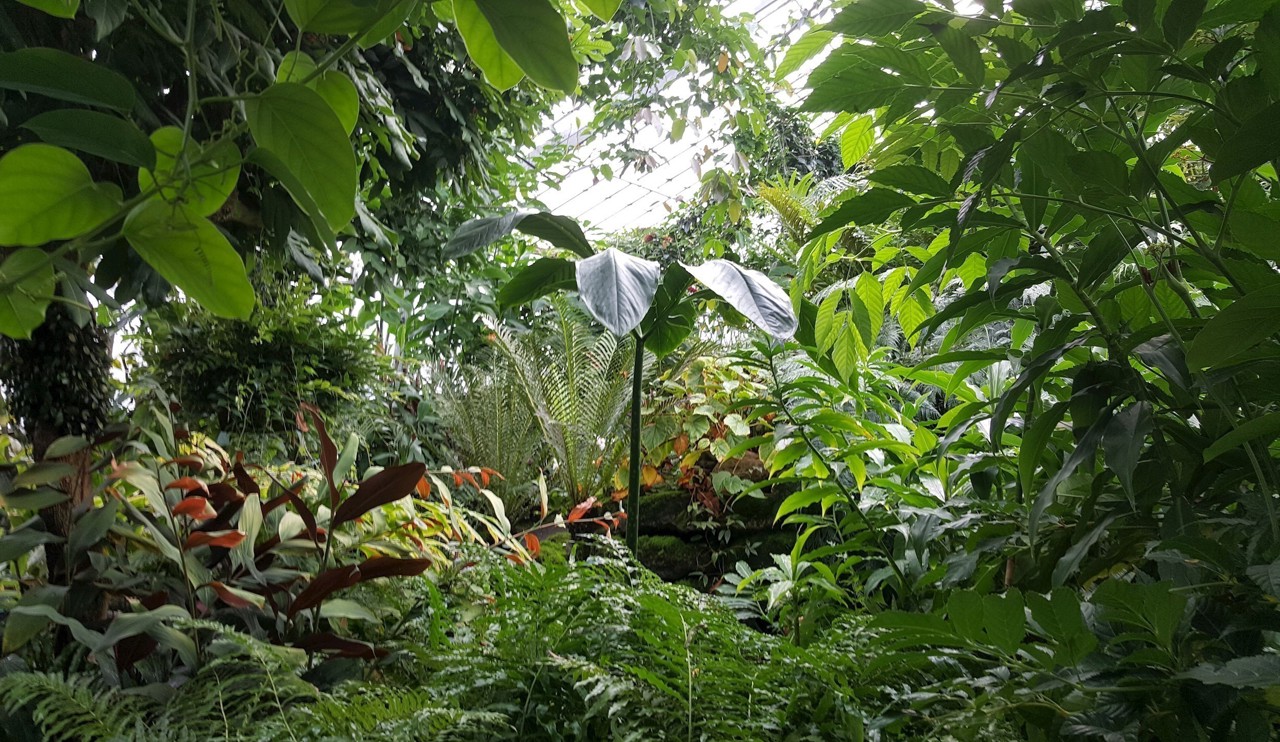
In the second of our clear-span glasshouse we stay in the same geographical area as the Montane Tropics House, but this environment represents the lowlands and so it is warmer and wetter. The limestone cliff provides the environment for members of the African violet family, the Gesneriaceae, within which are plants such as the goldfish plant (Columnea) and the lipstick vine (Aeschynanthus).
Dominant here is the large collection of gingers, the Zingiberaceae. Many species of this family have leaves that contain aromatic oils and the family includes culinary plants such as turmeric and cardamom as well as the familiar ginger Zingiber officinale. At the back of the house is a 1000-litre pot containing the tuber of the now-famous Amorphophallus titanum, the world's biggest and smelliest unbranched inflorescence. The plant flowered for the first time in Scotland in June 2015 when it flowered for the second time it was pollinated and went on to produce the first seed from Scotland.
Fossil Courtyard
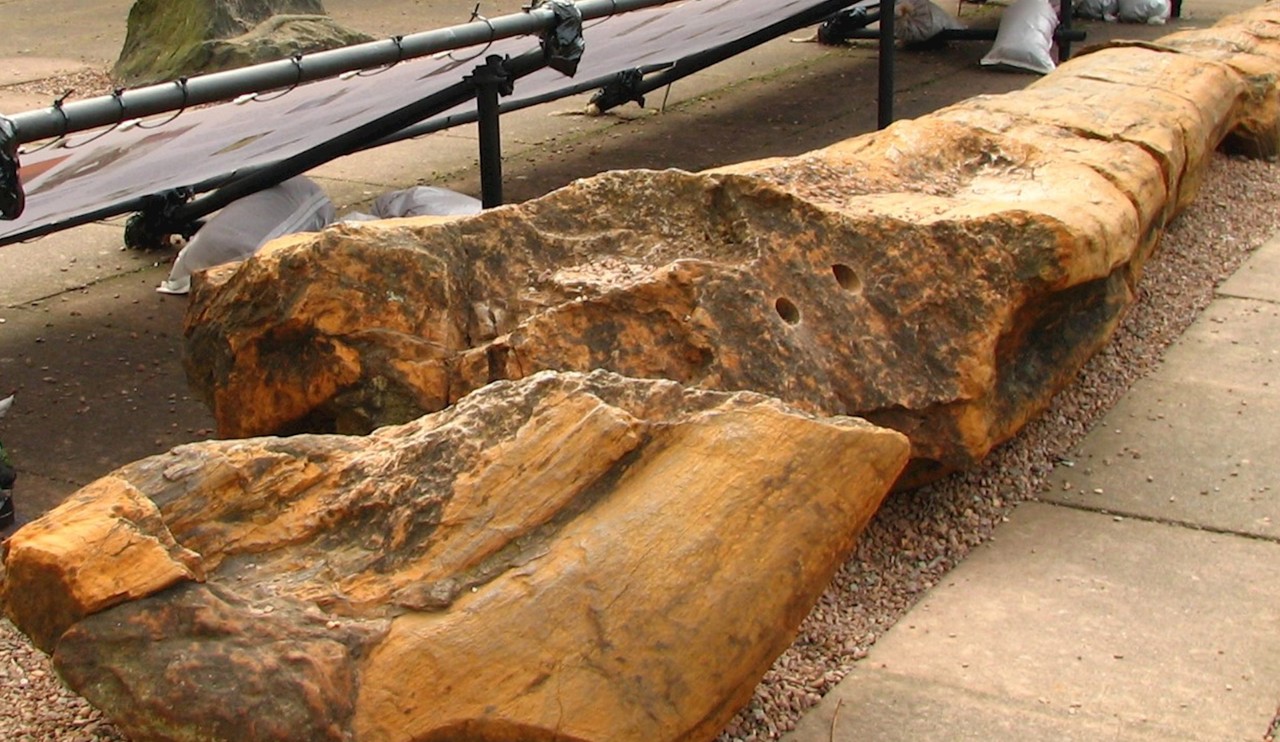
Discovered about a mile from here at Craigleith Quarry, Pitus withami grew in swamp forests during the Carboniferous Period 320-340 million years ago. Unfortunately, it has no close living relatives.
Behind is the fossilised root of a Lepidodendron, or scale tree, which could grow up to 45 metres. Its only living relatives are the small, trailing clubmosses ntive of Scotland, norther Europe and North America.
Discover more
Botanics Recommends
-
Explore our range of unique gifts and more. Every purchase supports the Garden.
-
Explore our unique venues, suitable for every occasion
-
Discover a range of books inspired by the RBGE's work and collections
-
Cultivate your curiosity with our programme of courses for all ages and interests.


